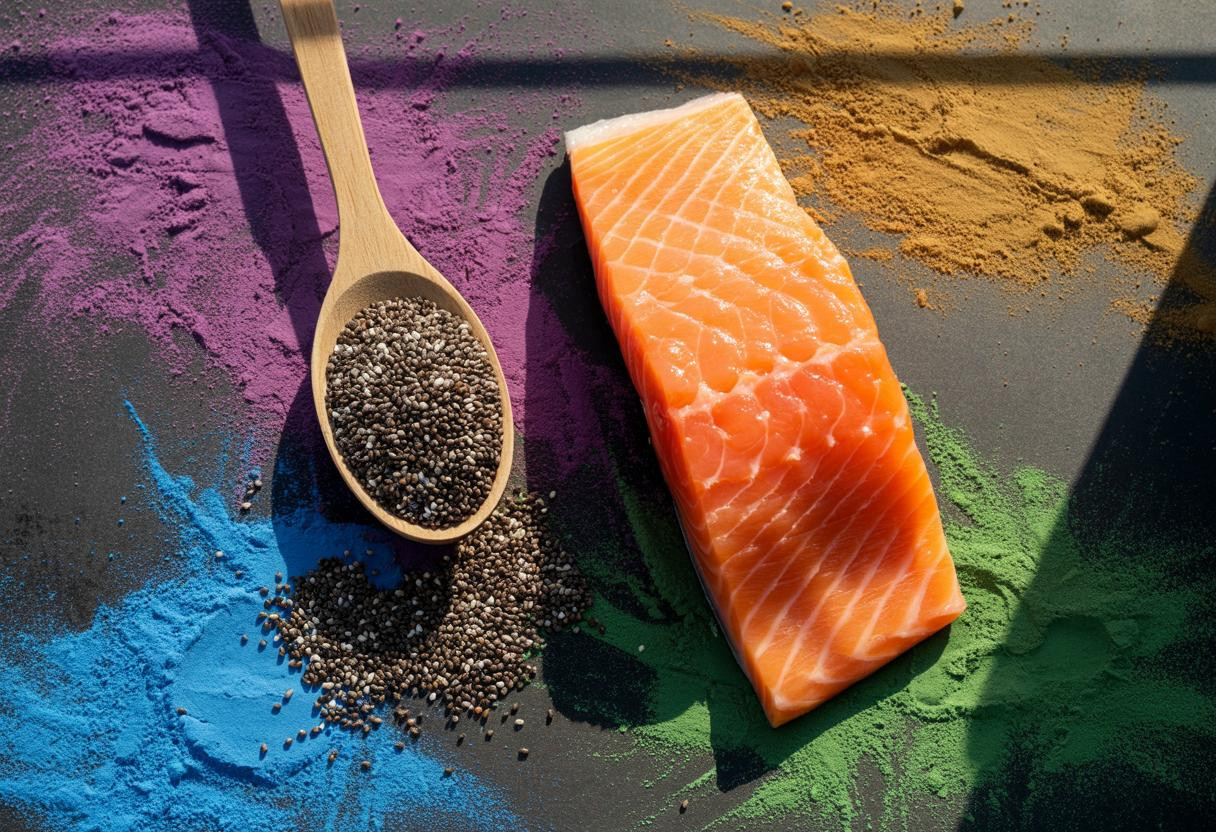Most people think chia seeds are just another health trend, but these tiny powerhouses contain more omega-3s than salmon per gram and can transform your metabolic health in ways that might surprise you. After analyzing the latest clinical research and nutritional data, I’ve discovered why a 30-day chia seed protocol could be the missing piece in your wellness routine.
The nutritional science behind chia’s remarkable power
Chia seeds pack an extraordinary nutritional punch that puts many so-called superfoods to shame. A single ounce contains 5 grams of omega-3 ALA, 9.8 grams of fiber, and 18% of your daily calcium needs. What makes this even more impressive is that these seeds were sustaining Aztec warriors for centuries before modern nutrition science even existed.
Recent studies reveal that chia seeds contain all essential amino acids, making them a complete protein source that rivals quinoa. The antioxidant profile includes chlorogenic acid and quercetin, compounds that actively combat cellular damage throughout your body.
Unlike traditional dietary approaches that focus on single nutrients, chia seeds deliver a synergistic combination that works together at the cellular level.
How your body transforms chia nutrients into health benefits
The omega-3 conversion mystery solved
Here’s where it gets fascinating: your body converts only 5% of chia’s ALA omega-3s into the more potent EPA form, but this small percentage still provides significant anti-inflammatory benefits. The conversion happens through delta-6-desaturase enzymes, and genetic variations in your FADS2 genes determine how efficiently this process works for you.
The fiber content creates an entirely different pathway to health. When chia fiber reaches your colon, beneficial bacteria ferment it into short-chain fatty acids like butyrate, which strengthen your intestinal barrier and reduce systemic inflammation.
The blood sugar stabilization effect
Clinical trials show that chia’s unique gel-forming properties slow carbohydrate absorption, potentially reducing post-meal blood sugar spikes by up to 39%. This happens because chia seeds absorb 10-12 times their weight in water, creating a viscous gel that physically slows digestion.
For those dealing with digestive issues, understanding how natural compounds support gut health becomes crucial for maximizing chia’s benefits.
The 30-day transformation protocol that actually works
Most people make critical mistakes when starting chia seeds, leading to digestive discomfort instead of benefits. The optimal protocol involves starting with just 1 tablespoon daily for the first week, then gradually increasing to 2-3 tablespoons by day 30.
Timing matters significantly. Consuming chia seeds 30 minutes before meals maximizes their blood sugar stabilization effects, while adding them to morning smoothies provides sustained energy throughout the day.
The hydration factor cannot be ignored. Each tablespoon of chia seeds requires at least 8 ounces of additional water to prevent the seeds from absorbing moisture from your digestive system, which could cause constipation.
Essential implementation strategies for maximum results
Preparation methods that unlock bioavailability
Ground chia seeds offer superior nutrient absorption compared to whole seeds. Grinding increases omega-3 bioavailability by approximately 23% because it breaks down the outer shell that can resist digestive enzymes.
Creating chia puddings by soaking seeds overnight allows complete hydration and easier digestion. Mix 3 tablespoons of chia with 1 cup of liquid and refrigerate for at least 4 hours.
Avoiding common supplementation mistakes
Individual genetic variations significantly impact how your body processes chia nutrients. Just as nutrient absorption varies between individuals, your omega-3 conversion efficiency depends on your unique genetic profile.
Those taking blood-thinning medications should consult healthcare providers before beginning chia supplementation, as omega-3s can enhance anticoagulant effects.
Why this ancient seed deserves modern attention
The convergence of traditional wisdom and contemporary research reveals chia seeds as more than just another superfood trend. Their unique combination of fiber, protein, and omega-3s creates metabolic benefits that extend far beyond basic nutrition. Understanding how to properly implement a 30-day chia protocol could be the key to unlocking sustained energy, improved digestion, and enhanced cardiovascular health in ways that single-nutrient supplements simply cannot match.
